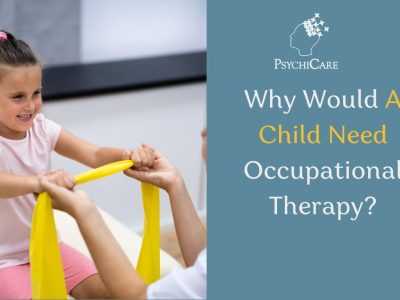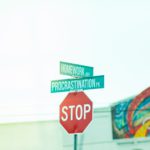I recently turned 69, a prophetic age for me, as three dear friends of mine died at that age. This month, I am posting a memorial to each of them, as they are all still very much alive in my spirit.

Phil Saviano is the most famous person I’ve ever known. He may not be Beyoncé famous, but he’s been featured on the cover of USA Today, profiled in newspapers and magazines, and was a key character in the film Spotlight, portrayed by actor Neal Huff. When Phil died, on November 28, 2021, he received full obituaries in The Boston Globe and The New York Times. Phil’s fame came from being a survivor of clergy abuse, who became a pivotal source in uncovering the clergy abuse scandal in Boston’s Archdiocese in the early 2000’s.
My relationship with Phil had nothing to do with any of that. We met in 1995, via a personal ad in Bay Windows, Boston’s gay rag. The old-fashioned kind of personal, in which I mailed a letter to a numbered box via US Post Office to an ad entitled: SMOKEY BAR MAN. Only after I’d finished my reply, did I realize that the personal was listed under the heading: POSITIVE ATTITUDES. What did it matter that this guy had HIV and I hate smokey bars: I liked his ad.
A few days later I got a call from a fellow who explained mine was the best letter he’d received, as it had no misspellings. Hardly a ringing endorsement. However, a few minutes into our conversation I learned that Phil was a Judy Collins fan, and since Wildflowers was the first album I’d ever received, Judy Collins linked us. We decided to meet.
I realized Phil was expert at personal ad first dates when he suggested we take a walk along Newbury Street. A public space; no dinner commitment; our encounter could last as long—or short—as chemistry dictated. By the time we reached the end of Newbury, it was clear that our romantic chemistry was nil. But our friendship potential high.
Over the next two decades Phil and I were second-tier friends. Never best buds, never completely out of touch. He came to our house for Thanksgiving and other group occasions—my children particularly liked this guy who wasn’t what they considered, “way gay.” Phil had quirky tastes. He introduced me to Jacques, Boston’s seedy drag bar. We went to amusement parks—the guy loved roller coasters. Once he took me to a Judy Collins concert, where I met Judy backstage. Turns out Phil was not simply a Judy Collins fan: he was the ultimate fan. He had been Judy’s New England concert promoter for years; he was her personal friend; he attended her wedding.
What we didn’t do was conventional friend stuff, like going out to dinner. Phil had contracted HIV in 1984, full blown AIDS shortly thereafter. At the time, he was given six months to live. More than ten years later, we met shortly after he recovered from a near-death hospitalization. Understandably, Phil was uber conscious of infection. He ate simply, mostly at home. He couldn’t hold a regular job, but ran a Oaxacan handicraft import business from his house. During Christmas season, I helped him process, package, and ship orders.
In October 2000, Phil invited me on a buying trip, during a period that encompassed Day of the Dead celebrations. We spent nine days in Mexico City, Puebla, Oaxaca, and surrounding villages; travelling second class buses; hitching rides; meeting artisans, visiting midnight cemeteries. The trip provided me with a first-hand view of central Mexico, but also a fresh perspective on Phil. This guy, so germ-phobic in the US, travelled casually, joyfully in Mexico. Phil knew a cohort of wood carvers and tinsmiths who created wonderful objects for him. They spoke little English, Phil spoke no Spanish. Yet they enjoyed long-standing, mutually profitable relationships. To me, Phil was an artichoke. More exotic than a mere onion, yet composed of layer upon layer that would never resolve into one simple core.
Phil could read people precisely. One day, over lunch, he laughed when I told a date-gone-bad story. “Why do you bother with that?” He said. “You live in your head.” I was perplexed, until I realized that he was right, and that his insight was offered without judgement. Rather, as neutral observation. Twenty years of therapy never provided me such a singular insight. Phil’s words triggered an essential turning point in my self-understanding. I do live in my head. And I’ve become quite fond of the place.
Yet, Phil kept a distance from others. The man was damnably independent. Although he was mostly healthy during the time we knew each other, years of toxic AIDS cocktails took their toll. His kidneys were shot. I knew he was in line for a transplant—sometime—but only learned about the actual operation from an article in The Globe. When I went to visit him in the hospital, he seemed happy to see me, but no way would Phil have told me of the operation in advance.

In fact, a few years later, when he hit sixty and laughed that after a quarter century of AIDS, he’d forgotten to save for retirement, Phil explained in earnest. “When my time comes, I’ll be all right. I have a few tight friends and my family.” I read between the lines. I was not among the select group; I would not be with Phil at the end.
And that’s what came to pass. I had little contact with Phil over the last years of his life. I found out he died just like everyone else, through the media blitz he would have savored. While the world remembered a hero who’d been abused at age twelve, spent more than half his life enduring AIDS, and initiated an unprecedented accounting of the Catholic Church, I was content with my memories of a good friend, who triumphed every moment of the thirty-six years he exceeded his prognosis. On his own terms.
![]()
About paulefallon
Greetings reader. I am a writer, architect, cyclist and father from Cambridge, MA.
My primary blog, theawkwardpose.com is an archive of all my published writing. The title refers to a sequence of three yoga positions that increase focus and build strength by shifting the body’s center of gravity. The objective is balance without stability. My writing addresses opposing tension in our world, and my attempt to find balance through understanding that opposition.
During 2015-2106 I am cycling through all 48 mainland United States and asking the question “How will we live tomorrow?” That journey is chronicled in a dedicated blog, www.howwillwelivetomorrw.com, that includes personal writing related to my adventure as well as others’ responses to my question.
Thank you for visiting.










